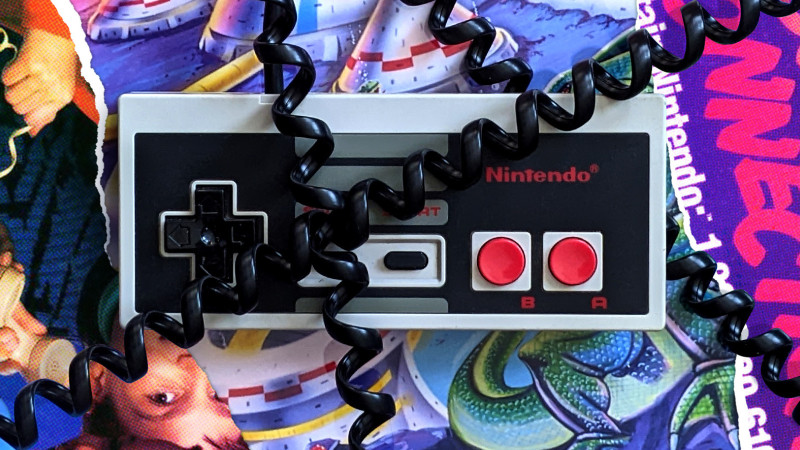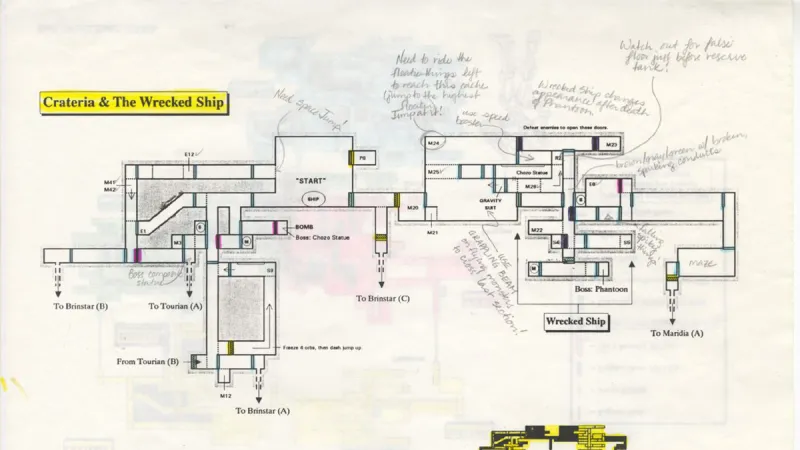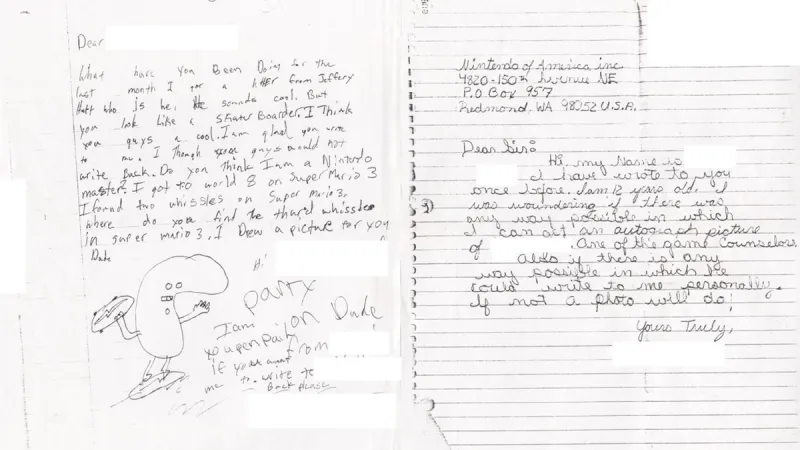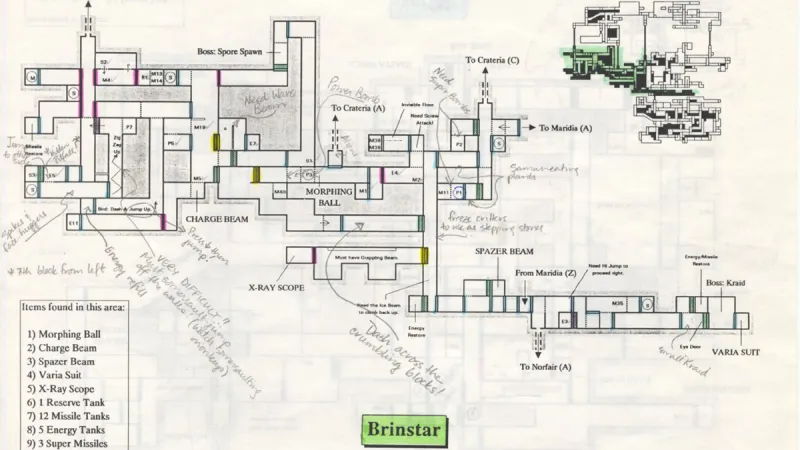
Kyle Hudson didn’t know what Nintendo was. But it was 1988, he was just back from boot camp, and he needed a job. His friend, Jeff Palmer, suggested they both go work for Nintendo. Palmer’s cousin Cliff worked there as a gameplay counselor; he got paid to play video games all day. Hudson and Palmer could do that, too, the latter said.
“Jeff sold it to me like, ‘Hey, we’re gonna sit in a cubicle and play games all day and answer phone calls,’” Hudson recalls. “And I was like, ‘Hell yeah.’”
In 1987, Nintendo launched its Nintendo Power Hotline. If a player encountered problems beating a video game, they could call the hotline and get advice from what Nintendo called a gameplay counselor. It was effectively a call center. It was also so much more than that.
By the time Nintendo shut the hotline down in 2005, gameplay counselors had helped millions. It became a part of video game history, fondly remembered decades later by children that called. For some kids, gameplay counselors were heroes; they were literally people who got paid to play video games all day. For others, counselors were the first people in their lives to talk seriously with them about games. For many counselors themselves, the call center launched their careers – both within and outside of Nintendo. Despite not knowing what Nintendo was in 1988 when he applied, Hudson stayed with the company until 2012. More than two decades after taking his first call, he had worked his way up to Nintendo’s product testing manager.
To get an idea of what it was like to work at the Nintendo Power Hotline, we recently spoke with 12 people. Talking to a wide variety of former counselors and people that called the Hotline growing up, we got a fly-on-the-wall look at what it was like to be part of this point in Nintendo’s history. We also learned a lot about Nintendo of America’s culture in the ’80s and ’90s, spearheaded by its former president, Minoru Arakawa.
The Best Job in the World
Nintendo wasn’t picky about who could be a gameplay counselor. In the earliest stages, all a person needed was to show up at one of the many temp agencies employed to fill seats and complete an application. If the temp agency called back, the first interview was breezy.
“It was basically, ‘Can you work this shift?’ ‘Do you have reliable transportation?’ Just basic stuff,” Hudson says. “‘Are you breathing? Are you warm-blooded? Okay.’”
It was when people got to Nintendo that the process intensified. The company billed gameplay counselors as video game experts. If you had a problem with a game, the professional gamers in Nintendo’s Redmond, Wash. office could help you – no matter how complicated or niche the issue may be.

Hand-drawn map for Super Metroid that GPCs would use to help callers. Image: Stephan Reese/Art of Nintendo Power
While Nintendo didn’t require any of its counselors to actually enjoy games, once a person made it past the initial temp interview, it did require a weeks-long training process. New employees had to play through games, learn about their various chokepoints and secrets, and take a massive test before they could field calls.
“Instead of just answering one very simple question about Legend of Zelda, maybe you have to list all of the treasures in all of the dungeons in both quests,” says former counselor Caesar Filori. “How do you get to the minus world in Mario? How many coins do you need for an extra life? They just wanted to make sure you actually knew the games inside and out, and the mechanics and how to beat the bosses.”
“But I’ll be honest with you. Myself, and a lot of people at that time, we cheated through the test,” Hudson admits. “Because I was like, ‘There’s no way I’m gonna remember all this s—.’”
After a short shadow period, where new counselors would sit in while an experienced counselor took calls, they finally got on the phones. Calls were immediate and plentiful.
It’s hard to nail down exactly how many calls a counselor would get on a given day, though most approximations land around 100 per shift. At its height, the call center had a couple hundred people taking calls for just under 24 hours a day. If each person is taking around 100 calls per day, in total, the call center was receiving thousands of calls every day it was in operation. Sam Hosier III, who worked there between ’94 and ’97, says at one point Nintendo gave out a shirt “that said we had done 28 million calls.”
Of course, this number was exacerbated by the holiday season, when people across the country were getting new Nintendo games and consoles. The counselors dubbed this “Hell Week.”
“When we had our full call center, they put up these telecaster boards that showed you how many calls were in-queue,” former counselor Yvette Kirby Waters says about Hell Week. “We called it the ‘Hellecaster’ because you could feel the pressure when 100, 200 calls are in-queue – 300, you know? And there were over 100 people in the call center taking calls one after another – boom, boom, boom. And yet, the queue list is still in the hundreds.”
Even though Nintendo required a certain level of memorization and expertise, it was understood gameplay counselors couldn’t know everything every one of those millions of callers inquired about. To help with tough calls, each counselor had a large green binder full of notes, hand-drawn maps, and solutions. Get good enough at passive conversation, and a caller on the other end of the line would never know a counselor was quickly flipping through pages, trying to find an answer. To them, it might seem like this person is the all-knowing gamer Nintendo was pitching them as in its then-monthly magazine Nintendo Power. In each issue, individual counselors were highlighted in the “Counselors’ Corner,” featuring tidbits such as their highest game score and favorite Nintendo games, letting callers put faces to the voices on the Nintendo Power Hotline.
Despite the sheer number of calls, as every counselor we talked to tells it, after long enough working the phones, you start to identify the most common questions across Nintendo’s most popular games. They may have taken over a hundred calls a day, but most of those calls were about the same two or three games. Work there long enough, and you can spend a lot of your day on autopilot.
“Once you heard the question, the response coming out of your mouth, you really didn’t have to think about it,” Hudson says.
This left gameplay counselors a lot of time to play video games on the clock – somewhat making good on the dream kids had that these were people who got paid to play games all day. In the Nintendo office was an ever-growing library with every single game the company had released up to that point. “There were no gaps in the collection,” Hosier says.
Counselors could check out various titles, and their desks even had TVs and consoles where they could play games while taking calls.
“One of the risks that you have doing that is if you’re someone who emotes when you die when you play a game, that can become problematic,” Filori says, adding employees got good at muting the call. “I don’t remember who it was, but I do know for fact a time where somebody got the mic button muting reversed, so all the person heard on the other end was profanity.”
Gaming in the office led to many now-famous pictures. While, ostensibly, letting counselors play games on the clock was so they could stay up-to-date and familiar with all Nintendo’s games, these photos worked double-duty as great recruitment tools. Kids could see counselors sitting in an office cubicle, making money and playing games. Who wouldn’t think that was cool?
“The concept of gameplay counselors back in the day for a kid obsessed with Nintendo games was kind of this dream job,” Phil Theobald, who called the hotline as a kid, says. “In my head, I had this vision of gameplay counselors as, like, the best job in the world.”
There were, however, the “nightmare calls.” For example, The Goonies, based on the movie of the same name, released by Konami in 1986. As Filori tells it, most of the areas in the game look identical; it was near-impossible to identify where a player was stuck. Same with Legacy of the Wizard. HAL Laboratory’s 1989 puzzler Adventures of Lolo was another pain point for gameplay counselors.
“I mean, these are like the Candy Crushes of the time,” says former counselor Casey Pelkey about Lolo. “People would call, and they’re in, like, the 11th level or something like that. They’re like, ‘Give me step-by-step.’ And we’re talking block by block how to do something. It can take forever, and as soon as they do something wrong, it’s a reset, right? Let’s try it again.”
“Lots of people would hang up on those calls,” Filori says. “Then, because the supervisors could still hear what you’re saying, even once you’ve wrapped up [since they would monitor calls for quality], they would just keep talking. They’d hang up and keep talking and then say like, ‘Um, are you still there? Are you still there? Hello? Hello?’”
King of the Castle
Jack Sapperstein was on vacation in St. Thomas Island when he got stuck on a boss in The Final Fantasy Legend, released by Square in 1989. Despite the long-distance charges required to call the Nintendo Power Hotline, Sapperstein, who grew up in New York City, says his parents generally understood when he asked at home to call “the Nintendo people.” However, in hindsight, he admits calling from the Caribbean was a bit outrageous.
Sapperstein was one of the millions of kids who bought into Nintendo’s marketing around gameplay counselors. He really thought these were all-knowing game fans who could answer every question under the sun without much second thought.
“I just always felt like it was so official, and they were always kind of getting these answers off the top of their heads,” he says. “As if I was talking to Mario himself.”
And so he called. A lot. Not just for games he was stuck on. Sometimes Sapperstein called with impossible questions – like how to unlock Vega on the Super Nintendo port of Street Fighter II. He wasn’t alone. Ben Rico, who grew up in the San Francisco Bay Area, called the Hotline numerous times. Rico says he was convinced there was a way to not automatically go down the pipe at the end of world 1-1. He called the gameplay counselors to try and confirm his suspicion.
“I was sitting there, like, ‘There’s gotta be a way to not automatically get sucked into it,’” Rico says. “Because I was, you know, a f—ing 9-year-old kid. I might have even been 8. The gameplay counselor – very nicely to this little kid – said that ‘No, there’s no way to do it. You get sucked in; you have to go to the next level.’”
Saperstein and Rico are what gameplay counselors refer to as “regulars.” While the Hotline did require long-distance charges for anyone outside of the Redmond area code, that didn’t stop people from calling so much that counselors began to remember them – somehow standing out among the thousands of other people they talked to every week. In some cases, these were just people who wanted someone to talk with. In other cases, they were dreaded calls; people counselors hated talking to. But in even more cases, they were just kids, entirely beside themselves with the idea of talking to their heroes – people that worked at Nintendo.
The Nintendo Power Hotline’s years of operation coincide exactly with Nintendo’s rise in pop-culture prominence and the video game industry’s in general. Moreso than ever before, people were playing video games, and here was this entire service built around helping people play their games. While young male children made up a lot of calls, according to those we talked to, people from all walks of life also called the Hotline.
“There were some grandparents who were passionate about this,” Waters says. “Maybe they started as a way to play with their grandkids, but they really got into it.”
The importance of talking to that many people – and more importantly, that many Nintendo fans – was not lost on founder and then-president of Nintendo of America Minoru Arakawa, who impressed upon counselors that they were providing a service for people who loved Nintendo. Treating them with patience and kindness was paramount. Admittedly, they were also helpful marketing.

Fans write in to the Nintendo Power Hotline. Image: Stephan Reese/Art of Nintendo Power
“Mr. Arakawa, I remember him conveying to us through the managers that this is how we make this business successful,” says Pelkey, who later worked as VP of marketing at the Tetris company, where Arakawa served as president until 2013. “If we don’t get people through the games, then they’re not going to want to buy the next one.”
More so than many executives, people talk about Arakawa with an absolute level of respect and appreciation. A lot of the people we interviewed for this piece were teenagers or young adults when they first joined Nintendo – the call center was their first job, and of course, it was an entry-level one. But Arakawa and his management team were insistent that, should people put the work in, being a gameplay counselor could be a first step towards a career within Nintendo. It didn’t matter how low someone was on the totem pole or what department they worked in; there was always room to go up at Arakawa’s Nintendo.
“He was a very kind, generous, man,” Hudson says. “I mean, what other CEOs knew every single employee’s name?”
Arguably, however, that generosity did come back to bite Arakawa at least a couple of times.
For a brief period and in the ’80s and ’90s, Nintendo spared no expense when throwing its annual holiday party. It would rent out entire floors of luxury hotels in downtown Seattle, offer hotel rooms and limo rides to and from for every employee so they wouldn’t need to worry about finding a sober driver, and give them top-shelf food and drink. Nintendo invited every employee – not just its C-suite. Former counselors we talked to describe being in awe of the parties. But for a group made up of many teenage boys and young men in their 20s, things quickly got out of hand once alcohol got involved.
“I do know some stories of people – whose names I can’t remember, and it’s probably good that I don’t – who lost their job after a Christmas party because of inappropriate behavior and apparently actually broke an elevator at the Sheraton in Seattle,” Waters says. “I don’t know how you do that. Maybe they put too many people in the elevator or whatever, but [they] managed to get an elevator stuck.”
“They ended up having to stop doing that,” Hudson says about the holiday parties. “They were destroying these rooms, and Nintendo was hearing about it from the hotels. That only lasted a year or two before they put a kibosh on that, too.”
No one we spoke to for this piece had anything negative to say about the culture of Nintendo or the call center at this time. However, with 30 years of hindsight, Waters does admit the culture probably wouldn’t be acceptable by 2022 standards, likening the call center office to a “college dorm.” It was also majority white and majority male. However, she does point out that her team – the bilingual call center employees, which served Spanish-speaking callers and French Canadians – was largely female.
“In the call center, there was a lot of things probably going on that I would say people would recognize now as inappropriate. But at the time, it was still sort of that fun [thing where] this organization was established by young people,” she says.
“So, you know, there’s some things you look at now and go, ‘Woah,’” Waters adds, laughing.
Hang Up
The Nintendo Power Hotline ran until 2005. It was a major part of Nintendo of America’s day-to-day business. Eventually, the green binders were replaced by a computer system called ELMO, or Electronic Manual Organizer, which streamlined looking up and finding answers. But after a while, technology phased out the need for gameplay counselors. If every walkthrough is easily accessible online – for free – why would you pay to call the Hotline? Especially after it switched to a tolled 900 number from its original Redmond area code number.
But if there’s one thing that stands out and one thing that makes it unique, it’s that it’s remembered at all. There are numerous other call centers in the world, few of which have any longstanding legacy – much less any as fondly remembered as Nintendo’s.
A simple reason for this is the call center focused on fun video games. It also helped that Arakawa required people in the call center to be kind to the people calling in. Beyond that even, he required every single letter sent to Nintendo of America to get a response; there was an entire team within the customer service office dedicated to just answering mail. As far as customer service goes, it was hard to beat Nintendo at this time.
Stephan Reese, who’s dedicated his life to collecting Nintendo ephemera and runs the Art of Nintendo Power education exhibit, describes it succinctly: This was the first time many people had taken their hobby seriously. It was the first time people didn’t talk down to them about liking video games.

GPC annotations on a map of Super Metroid’s Brinstar area. Image: Stephan Reese/Art of Nintendo Power
“It really was a friend for a lot of these kids,” says Reese, who called the Hotline once when he was around 7. “Specifically, a friend who spoke their language, who knew what they were talking about, who loved games as much as they did, and was able to articulate that back.”
“These were the only adults in my life who were not openly mocking something that I love more than anything,” Reese adds.
The call center was the first step to joining the game industry for the counselors we interviewed. Waters later worked on the Nintendo GameCube software development kit before moving on to a job at Microsoft. She’s now a self-employed contract strategist. Hosier worked as an event production coordinator and assistant manager of trade events at Nintendo before spending time at other tech companies like T-Mobile. After working as a tester for Nintendo, Filori worked for EA, Microsoft, Nike, and Oculus. He’s now a technical programmer at Meta. The list goes on.
But for all of them, it started in that call center.
“Sometimes you hear about something being this golden age, right?” Filori says. “It felt like a golden age at the time. This is different. It’s something new; it’s different; this is a unique thing. I don’t know that it could ever be recreated or replicated to be part of the explosion of video games at the time.”
“It was weird,” he adds. “It was a very weird and unique thing.”
This article originally appeared in Issue 343 of Game Informer.
Source: Game Informer Inside The Nintendo Power Hotline

